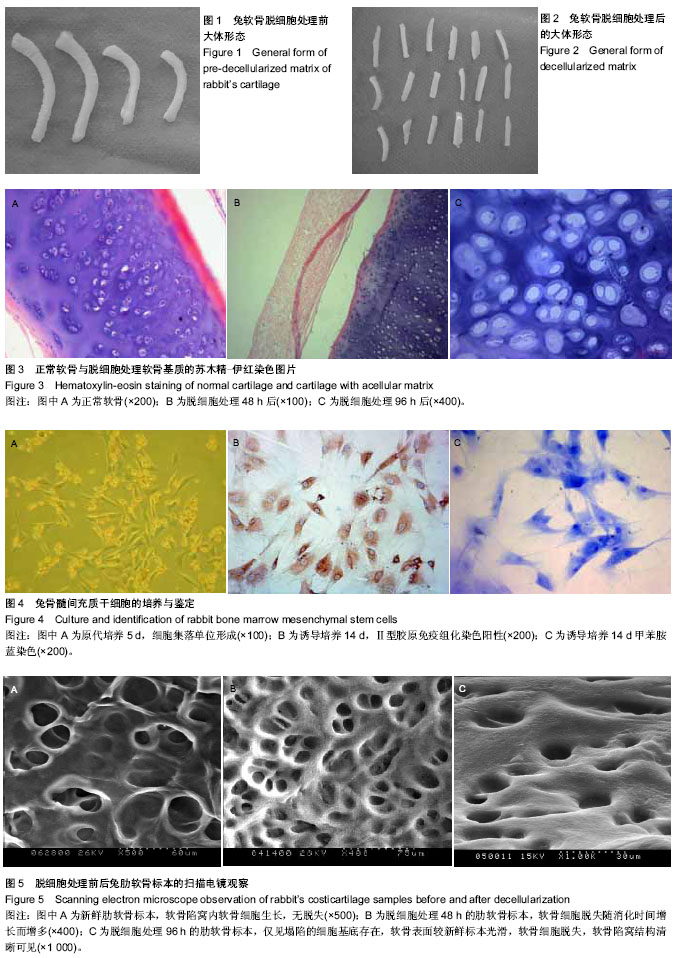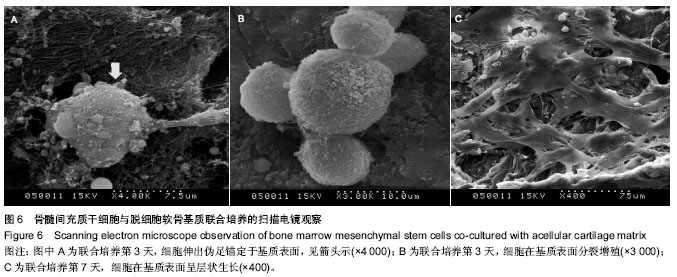| [1] 李春根,曲戈,叶超,等.组织工程软骨与柚皮苷联合修复兔膝关节软骨缺损的组织学证实[J].中国组织工程研究,2014,18(20): 3165-3171.
[2] Jungebluth P,Bader A,Baiguera S,et al.The concept of in vivo airway tissue engineering. Biomaterials. 2012;33(17): 4319-4326.
[3] Zang M,Zhang Q,Chang EI,et al.Decellularized Tracheal Matrix Scaffold for Tissue Engineering.Plast Reconstr Surg. 2012; 130(3):532-540.
[4] Haag J,Baiguera S,Jungebluth P,et al.Biomechanical and angiogenic proprties of tissue-engineered rat trachea using genipin cross-linked decellularized tissue.Biomaterials. 2012; 33(3):780-789.
[5] Ott LM,Weatherly RA,Detamore MS.Overiew of tracheal tissue engineering;clinical need drives the laboratory approach.Ann Biomed Eng.2011;39:2091-2113.
[6] Hoshiba T,Lu H,Kawazoe N,et al.Decellularized matrices for tissue engineer.Expert Opin Biol Ther.2011;10:1717-1728.
[7] 孙飞,潘枢,史宏灿,等.去污剂-联合酶法行兔脱细胞组织工程气管制备及性能评价[J].中华胸心血管外科杂志,2014,30(1): 38-41.
[8] 章方彪,史宏灿,张卫东,等.兔脱细胞同种异体气管基质衍生材料的形态特征及其生物力学[J].中华实验外科杂志,2014,31(3): 573-576.
[9] 李炜,赁可,周艳荣,等.制备犬胸主动脉脱细胞血管支架的新方法[J].中国心血管病研究,2014,12(4):337-384.
[10] Badylak SF,Weiss DJ,Caplan A,et al.Engineered whole organs and complex tissues.Lancet.2012;379:943-952.
[11] Crapo PM,Gilbert TW,Badylak SF.An overview of tissue and whole organ decellularization processes.Biomaterials. 2011; 32:3233-3243.
[12] Elliott MJ,De Coppi P,Speggiorin S,et al.Stem-cell-based, tissue engineered tracheal replacement iin a child:a2-year follow-up study.Lancet.2012;380:994-1000.
[13] Partington L,Mordan NJ, Mason C,et al.Biochemical changes caused by decellularization may compromise mechanical integrity of tracheal scaffolds.Acta Biomater.2013;9: 5251-5261.
[14] Baiiguera S,Del Gaudio C,Jaus MO,et al.Long-term changes to in vitro preserbed bioengineered human trachea and their implications for decellularized tissues.Biomaterials. 2012; 33:3662-3672.
[15] 张新.不同材料构建组织工程软骨及支架的应用[J].中国组织工程研究与临床康复,2012,16(8):1491-1495.
[16] 陈哲峰,范卫民,刘峰.利用PLA、PGA、PLGA三种支架再生兔关节软骨[J].江苏医学,2005,31(8):599-601.
[17] Breitbait S,Graride DA.Tissue engineerde bone repair of calvarial defects using cultured periosteal cells.Plast Reconstr Surg.1998;101(3):567-572.
[18] Cook AD,Harkach JS.Characterization and development of RGD-pe ptide-modified poly(Lactic acidcolysine)as an interactive resorbable biomaterial. Biomed Mater Res.1997; 35(4):513-518.
[19] 周长忍,丁珊,李立华.可降解材料的制备及用研究进展[J].中华创伤骨科杂志,2000,12(4):317-319.
[20] 韦益毅.不同生物材料复合支架对关节软骨缺损的修复评价[J].中国组织工程研究与临床康复,2011,15(25):4723-4725.
[21] Wakitani S,Goto T,Young RG,et al.Repair of large fullthickness articular cartilage defectswith allograft articular chondrocytes embedded in a collagen gel.Tissue Eng.1998;4(4):429-444.
[22] Lee CR,Grodzinsky AJ,Spector M.Biosynthetic response of passaged chondrocytes in a type II collagen scaffold to mechanical compression.J Biomed Mater Res.2003;64(3): 560-569.
[23] Van Susante JL,Buma P,Homminga GN,et al.Chondrocyte seeded hydroxyapatite for repair of large articular cartilage defects:A pilot study in the goat.Biomaterials.1998; 19(24): 2367-2374.
[24] Wainwright DJ.Use of an acellular allograft dermal matrix (AlloDerm) in the management of full-thickness burns.Burns. 1995;21(4):243-248.
[25] Martin ND,Schaner PJ,Tulenko TN,et al.In vivo behavior of decellularized vein allograft.J Surg Res.2005;129(1):17-23.
[26] Ng KW,Khor HL,Hutmacher DW.In vitro characterization of natural and synthetic dermal matrices cultured with human dermal fibroblasts.Biomaterials.2004;25(14):2807-2818.
[27] Jernigan TW,Croce MA,Cagiannos C,et al.Small intestinal submucosa for vascular reconstruction in the presence of gastrointestinal contamination.Ann Surg.2004;239(5): 733-738.
[28] Cebotari S,Mertsching H,Kallenbach K,et al.Construction of autologous human heart valves based on an acellular allograft matrix.Circulation.2002;106(12 Suppl 1):163-168.
[29] Courtman DW,Pereira CA,Kashef V,et al.Development of a pericardial acellular matrix biomaterial: biochemical and mechanical effects of cell extraction.J Biomed Mater Res. 1994;28(6):655-666.
[30] 徐斌,王浩,徐洪港,等.同种异体脱钙骨复合骨髓间充质干细胞在兔膝关节腔内培养组织工程软骨的研究[J].中华实验外科杂志, 2011,28(6):979-982. |

